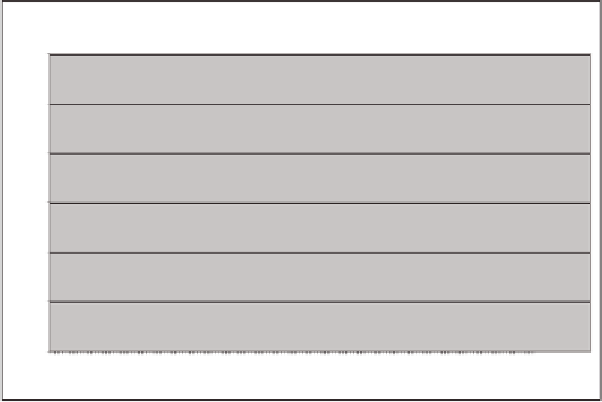Information Technology Reference
In-Depth Information
participated with at least a few postings. In two
weeks they posted nearly 3000 issues ideas and
arguments (of which roughly 1900 were eventu-
ally certified) in addition to over 2000 comments
(table 2). They were, however, relatively few rat-
ings, notwithstanding the presence of extrinsic
incentives: each post received an average of only
2.2 ratings.
The intensity of participation was very het-
erogeneous among users, as shown in Figure 7.
This distribution of posts per users shows a thick
middle of users and it vaguely recalls the power
law distribution that has instead been found to be
typical of many on-line communities (Madey et
al., 2002; Healy and Schussman, 2003).
The breadth of coverage, as well as the ef-
ficiency of the platform in terms of knowledge
accumulation, was quite good: a non-expert com-
munity of students was able to create a remark-
ably comprehensive map of the current debate on
biofuels in just a couple of weeks, exploring topics
ranging from technological issues to environmen-
tal, economic and socio-political impacts of the
widespread diffusion of biofuels. Moreover, the
proportion of out-of-topic posts was negligible -
about 0.1%. The dominant argument scheme was
“by authority”, followed by analogy, deductive,
and inductive schemes (table 3). It also appears
that users were generally not able to associate the
Table 2. Number and kind of posts
Type of Post
Number of Posts
Number of Certified Posts
% (certified)
Issue
242
89
5%
Idea
962
452
24%
Pro
1488
1045
55%
Con
402
325
17%
Comments
2009
n/a
n/a
Grand total
5003
1911
100%
Figure 7. Distribution of number of posts per user
# of contributions per user
60
50
40
30
20
10
0
1 0192837465564738291100 109118 127136 145154 163172 181190 199208
user rank




















































Search WWH ::

Custom Search